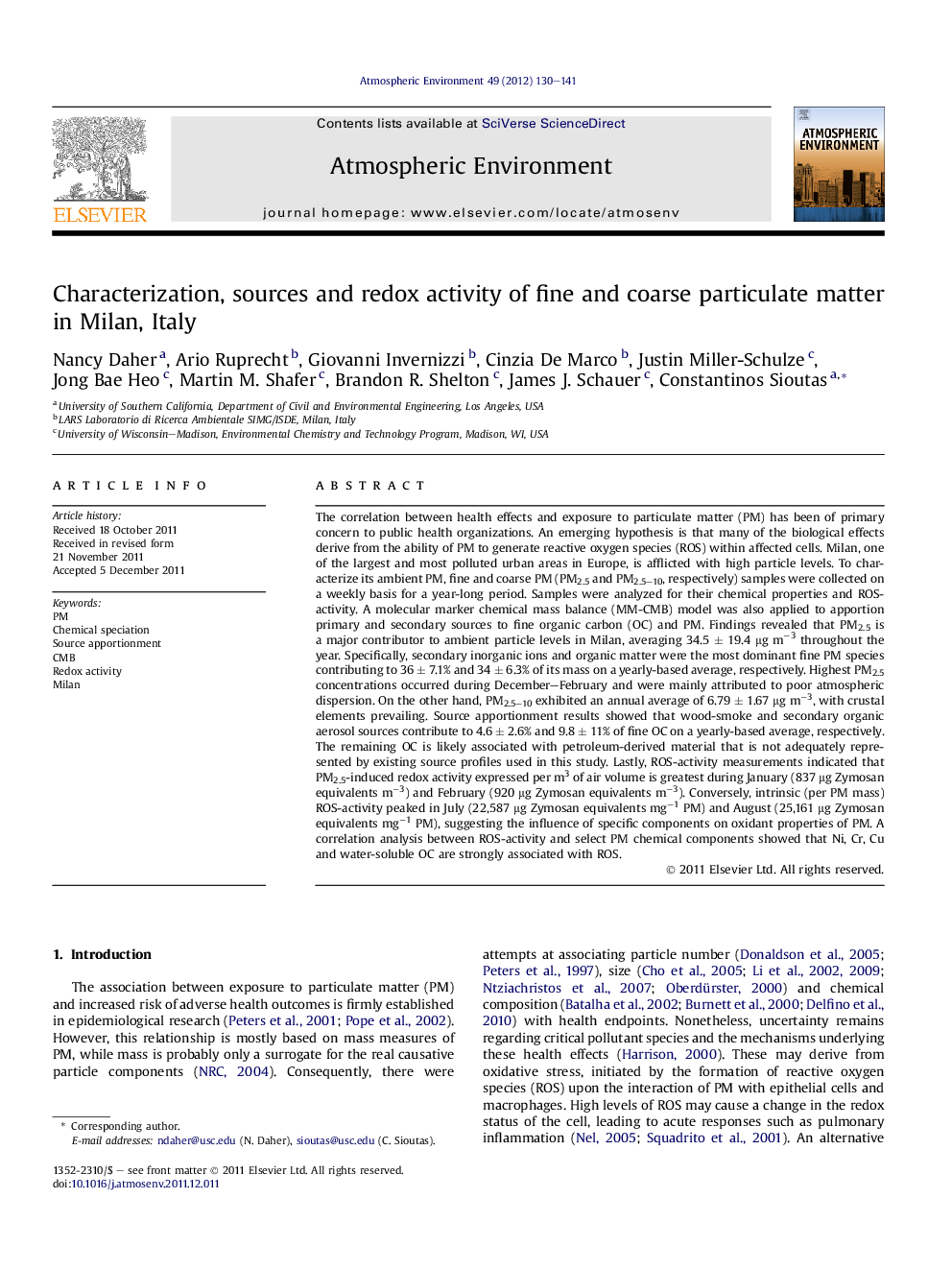| کد مقاله | کد نشریه | سال انتشار | مقاله انگلیسی | نسخه تمام متن |
|---|---|---|---|---|
| 4439071 | 1620422 | 2012 | 12 صفحه PDF | دانلود رایگان |

The correlation between health effects and exposure to particulate matter (PM) has been of primary concern to public health organizations. An emerging hypothesis is that many of the biological effects derive from the ability of PM to generate reactive oxygen species (ROS) within affected cells. Milan, one of the largest and most polluted urban areas in Europe, is afflicted with high particle levels. To characterize its ambient PM, fine and coarse PM (PM2.5 and PM2.5–10, respectively) samples were collected on a weekly basis for a year-long period. Samples were analyzed for their chemical properties and ROS-activity. A molecular marker chemical mass balance (MM-CMB) model was also applied to apportion primary and secondary sources to fine organic carbon (OC) and PM. Findings revealed that PM2.5 is a major contributor to ambient particle levels in Milan, averaging 34.5 ± 19.4 μg m−3 throughout the year. Specifically, secondary inorganic ions and organic matter were the most dominant fine PM species contributing to 36 ± 7.1% and 34 ± 6.3% of its mass on a yearly-based average, respectively. Highest PM2.5 concentrations occurred during December–February and were mainly attributed to poor atmospheric dispersion. On the other hand, PM2.5–10 exhibited an annual average of 6.79 ± 1.67 μg m−3, with crustal elements prevailing. Source apportionment results showed that wood-smoke and secondary organic aerosol sources contribute to 4.6 ± 2.6% and 9.8 ± 11% of fine OC on a yearly-based average, respectively. The remaining OC is likely associated with petroleum-derived material that is not adequately represented by existing source profiles used in this study. Lastly, ROS-activity measurements indicated that PM2.5-induced redox activity expressed per m3 of air volume is greatest during January (837 μg Zymosan equivalents m−3) and February (920 μg Zymosan equivalents m−3). Conversely, intrinsic (per PM mass) ROS-activity peaked in July (22,587 μg Zymosan equivalents mg−1 PM) and August (25,161 μg Zymosan equivalents mg−1 PM), suggesting the influence of specific components on oxidant properties of PM. A correlation analysis between ROS-activity and select PM chemical components showed that Ni, Cr, Cu and water-soluble OC are strongly associated with ROS.
► PM levels in Milan are dominated by PM2.5, which exceeded the EU annual mean limit.
► Secondary inorganic ions and organic matter mostly contributed to PM2.5.
► Wood-smoke and SOA accounted for 4.6 and 9.8% of fine OC on a yearly-basis.
► Residual OC was mostly attributed to petroleum-based material.
► Reactive Oxygen Species (ROS)-activity strongly correlated with Ni, Cr, Cu, WSOC.
Journal: Atmospheric Environment - Volume 49, March 2012, Pages 130–141